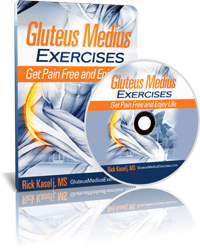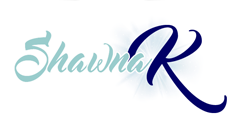
Shawna
I feel the toughest part of the pull up for me is the beginning; it seems like it’s all in my shoulders and after I do a shoulder shrug, I can’t get any farther. Thanks for you help,
John
Dear John,
The scapular retraction is difficult on the pull up (this is what you’re describing). Keep practicing this unassisted and then add the assist after you’ve done the initial pull on your own.
Make sure you’re pulling your CHEST to the bottom of the bar, get under the bar and look up. Most people try to get their chest up and over the bar, or at the very least their chin over the bar. This causes inward rotation of the shoulders.
Check out the difference in body positions here:
This is a better position for an inverted row than a pull up. The body is too laid out. The angle of pull is incorrect to achieve a pull up.
In this next position, you can see that I’m directly UNDER the bar, but I’m looking up. Many get into this position but they drop the chin (looking forward and not up). This will allow me to engage the lats more than the rotator cuff muscles.
I want you to think about squeezing the shoulder blades together, keep them down and back, think ‘long neck’. This will help you use the stronger pulling muscles of the back.
Give it a go and let me know how you do.
Shawna
*************************************************************************************************************
Dear Shawna
When I do push ups I feel my left shoulder and left side are weaker than my right side. I find myself leaning more to my right than using both arms to push up. Why? And what can I do to even things out?
JH
Dear JH
You’re probably right hand dominant; this is very common to have a dominant side. Let’s try doing single DB’s when doing incline and prone DB presses/flies. Start on the left, do a set on the left, do the right side and then finish w a few more reps on the left. I balance myself with the other arm in a similar press or fly position so I don’t fall off the bench.
I’ve recently started doing single arm DB presses and flies and I love them. Not only do they address muscle imbalances, but they also work your core a ton. It’s interesting how when I’m doing a single arm press (I’ve been able to work up to almost the same weight as when I do doubles), I feel my core and my butt cheek really work to stabilize me on the bench.
Who’d a thunk that you can train your bum while doing chest presses? 😉
Asymmetry is normal and you can never completely eliminate it, but you can narrow the gap between strength on left and right.
Shawna
****************************************************************************************
Here’s a follow up question to learning to do hanging leg raises (see this post for the original question/answer)
Shawna,
I promise I won’t keep asking questions, but is there a certain time frame or anything to strive for in the unsupported hang for starters? How long should I be able to do the unsupported hang before I start to add a single leg raise? When should I try the double leg raise? I’m strong in other lifts, but this one is a real challenge for me. Thanks for actually replying!
KB
Dear KB
I’m very happy to help with your questions. If I’m solving an issue for you, you can bet it’s a problem for others too. Trust me, you’re helping more than just yourself by asking and I don’t mind in the least. Getting questions from my readers lets me know where there are holes or gaps in my programs so I’ll be able to create more effective ones for everyone.
The hanging leg raise is like any other lift. You need to use progressive resistance and strength building to get you to your goal of a double leg raise which will eventually lead to a full on pull up.
A client working with another trainer told me that they actually strained their abdominal wall by getting into the hanging leg raise position and did an unsupported hang. If you haven’t been in this position since grade school, here’s a hint: you’ve added a few pounds. Don’t rush it. This is a challenge for many.
Work up to a 10-15 second unsupported hang before working to do a single leg raise.
You can always have a chair close by so that you can take some of your weight off by placing the feet directly under you. Hang for as long as possible, then take some of your weight on the feet and continue to hang.
Then, after you’ve achieved this success (pat yourself on the back because this IS progress!), start to add a single leg raise. Once you can do five leg raises per side, test out the double leg raise. Again, have the chair there for support. Try this fresh and not after you’ve done several sets.
Hope this helps, keep me posted!
Shawna
************************************************************************************************
Here’s a follow up from my pal, Rick Kaselj about hip displasia:
Hip dyspasia is where bones of the hip are not aligning well with the hip joint. This can occur as a infant, child or adult.
Things to do is to get guidelines and recommendations from the doctor that diagnosed you. They will have the best idea of how severe it is and what you are able to to.
After this I would focus on minimizing pain. Avoid positions and activities that lead to pain. Pain will inhibit the recovery process.
When it comes to exercise, be cautious of single leg exercises, single leg jumping and running. These activities put a lot of stress on the hip joint. In time you can build up to them but monitor how your hip feels.
I would work on performing:
- bilateral squats
- unilateral squats – starting off with balance and then progressing
- lunging – starting off with static and moving to dynamic
- work on glutueus medius exercises
- I would also work on gluteus maximus exercises
Here’s a great resource: http://

************************************************************************************************
Hi Shawna,
Jeannine,
For the most part, the program is laid out where by you’ll do one set, rest 30 sec, repeat the same set. Here’s an example of an exercise that you’ll do two sets with a short rest in between:
Assisted pull ups with controlled descent·
10 reps·
Rest 30 seconds·
repeat
Hope this helps. Keep me posted!
Sincerely,
Shawna
**************************************************************************************************************
I love getting emails like this:
I purchased your program at the beginning of the week and have already seen improvements. I do a lot of the exercises that are in your program already but the technique of the pull ups have helped so much. I feel stronger and able to do one full pull up with no problem now. I no longer dread the pull up bar, I look forward to it.
Thank you
Kelly
Thanks for sharing Kelly! If you want to rock the pull up bar, click HERE and you’ll make sure progress too.







